Things bakers know: Yes, you can freeze eggs for baking
A simple solution for excess eggs.
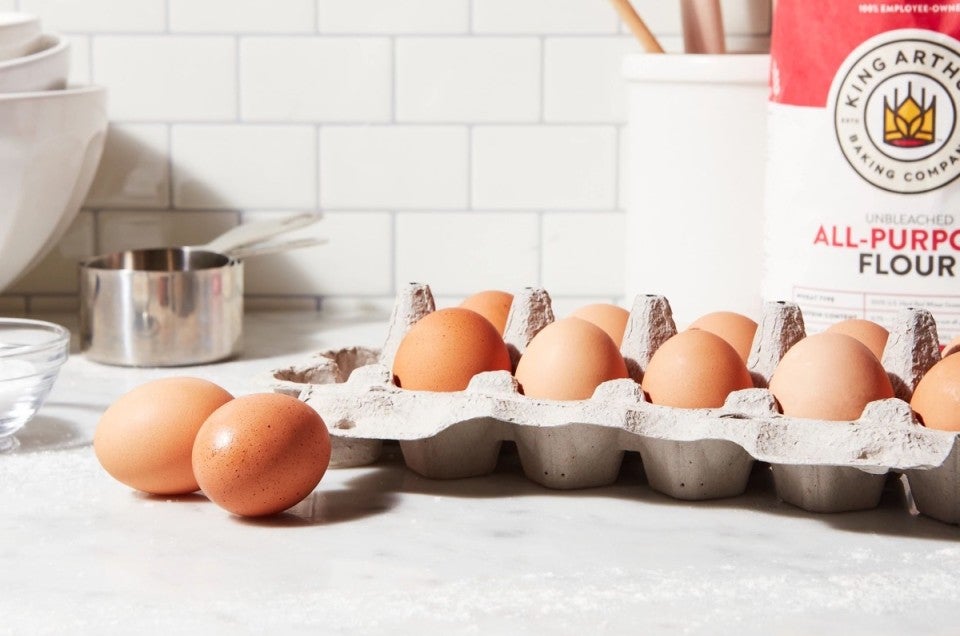

You got a deal on eggs at the supermarket, or your backyard hens are overproducing. Whatever the reason, you now have a couple of dozen eggs and are starting to wonder if you’ll be able to use them all up before their “best by” date comes and goes.
No problem — just freeze them!
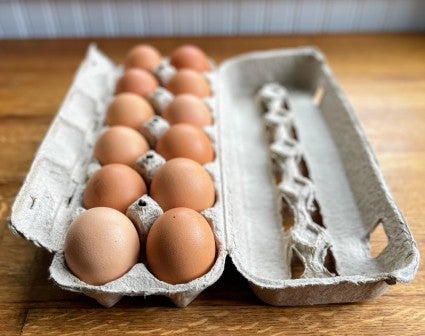
Freeze eggs for baking — really? Absolutely. Follow the tips and techniques below to safely and effectively freeze whole eggs, the whites, or just the yolks — and never again have to discard aging eggs, or those couple of leftover whites you didn’t know what to do with.
Since most baking recipes call for large eggs, that’s what we’ll talk about here.
For easiest handling, silicone molds are the way to go, as frozen eggs pop right out of flexible silicone. The wells in this cake mold, for instance, should each hold a whole egg, a couple of whites, or up to three yolks. (Heads up: At King Arthur, we only recommend the products that we, as bakers, truly love. When you buy through external links on our site, we may earn an affiliate commission.)
My container of choice is a large silicone ice cube mold designed to make 2” ice cubes. Each generously sized well can easily hold a single whole egg, yolk, or white. But it can also handle up to five yolks, three whites, or two whole eggs at a time if you want to combine your eggs for freezing.
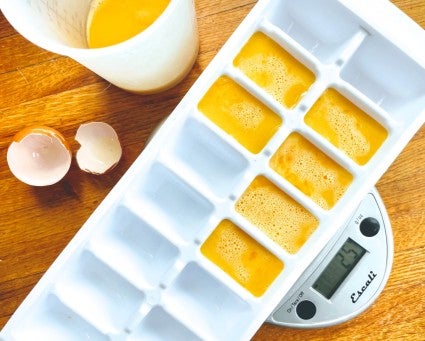
Your second choice is flexible plastic (think ice cube trays you can twist). You’ll be able to pour half a whole egg (or one whole yolk; or one whole white, barely) into each ice cube-sized hole.
In a pinch, your standard metal muffin tin will work, though it’s more difficult to get frozen eggs out of a metal pan than a flexible mold or tray. Each well of the tin will hold two large eggs. How about a mini muffin pan? Its wells are half-egg capacity.
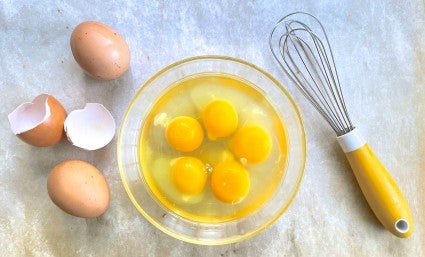
First, don’t freeze them in their shell; the USDA doesn’t recommend it.
Eggs can be safely frozen for up to a year; but for best results, use them within three to four months.
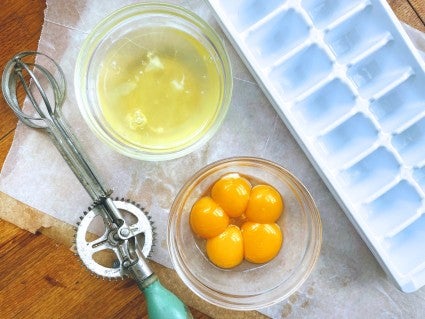
You made meringues and have leftover yolks. Or you made pastry cream and find yourself with leftover egg whites. If you don’t want to add those leftovers to a scramble, omelet, or frittata, it’s simple to freeze them for the future. Here’s how:
For yolks: Place the yolks in a bowl. For every yolk, add a tiny pinch of salt (or a generous 1/16 teaspoon sugar). Gently whisk the yolks and salt or sugar to combine, just until the mixture is pourable. Pour 18g (the weight of one large yolk, a generous tablespoon) into the well of your chosen container. Freeze as directed above. And when using, remember to reduce the amount of salt in your recipe to account for the salt in the yolks, if necessary.
For whites: If you plan ahead, you can simply slip each white into a well of your freezing container while you’re separating the eggs for your recipe. If you’ve already cracked the eggs and have ended up with a bowl of leftover whites, though, here’s what to do: Gently whisk the whites until just pourable (no need to add salt or sugar). Pour 30g (the weight of one large white, about 2 tablespoons) into the well of your chosen container. Freeze as directed above.
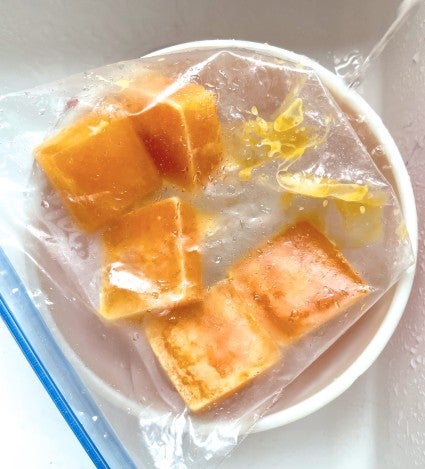
Place however many frozen whole eggs, egg whites, or yolks you need into a covered bowl, and transfer them to the refrigerator. Let them thaw gradually overnight. For quicker thawing, place eggs in a watertight plastic bag or other container and submerge in a bowl of cold water set in the sink; let cold water from the tap dribble gently into the bowl, to make sure the eggs stay cool as they thaw. Depending on how large the frozen egg blocks are, they'll thaw in as quickly as 15 minutes, or may take as long as 40 minutes or so. If you're in a hurry, gently massage the bag of softening eggs to help things along.
Still looking to use up an overabundance of eggs? The following egg-rich recipes will make a dent in your supply: Breakfast Slab Pie (12 eggs), Flourless Chocolate Nut Cake (10), Almond Roll (9), or Lemon Chiffon Cake (8).
Cover photo by Rick Holbrook; food styling by Kaitlin Wayne.

